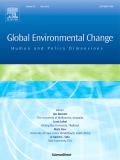Although the popularity of energy management and “Green” projects is improving, there are many good projects that are postponed or cancelled owing to common barriers. This article discusses these barriers and problems, as well as effective, proven strategies to overcome them. These timeless, as well as cutting-edge strategies involve marketing, educational resources, and financing approaches to make projects irresistible.
Hopes for a grand deal were mercilessly shattered at Copenhagen in December 2009 and in other recent UNFCCC meetings, with the result that “green growth” is promoted as an alternative path. Indeed, green growth is clearly the goal, but it is no magic bullet. The world economy will require clear and rather tough policy instruments for growth to be green—and it is naïve to think otherwise. Growth, green or not, will boost demand for energy and coal is normally the cheapest source. The magnitude of the challenge is greater if we also consider the problems related to nuclear (fission) energy and, in some instances, to bioenergy (such as its competition for land that may be essential for the poor). This paper discusses some necessary ingredients for a long-term global climate strategy. As we wait for the final (and maybe elusive) worldwide treaty, we must find a policy that makes sense and is not only compatible with, but facilitates the development of such a treaty.
Rapidly growing emerging economies, such as Brazil, China, India and Indonesia have joined the ranks of major industrialized countries as significant emitters of greenhouse (GHG). Their rapid economic growth has, however, brought about considerable environmental degradation, health costs, material damage, and a decrease in agriculture productivity. The notion of “green growth” has been proposed as a way out. This paper examines the case of Indonesia and evaluates its search for green growth through an approach that combines a so-called Energy Mix Policy and a REDD+ program.
This essay discusses some current proposals for improving global environmental governance and suggests that the debate be shifted to the emerging paradigm of how to organize to achieve a green economy.

The rhetorical zeal for green enterprise as a global fix for the tripartite challenges of economic recession, environmental degradation and social inequality is increasingly visible in state and non-state pronouncements around the globe under the banner of ‘The Green Economy’. In particular, many policy-facing statements call for transitions leading to a transformation in development practices. Yet there is little detail either in policy or research regarding the types of transitions needed and how they are to be initiated, nor agreement about what a transformed economy might look like. Despite this, there are emergent activities within the cleantech arena which are being heralded as actually existing examples of green economy activities. One means through which these activities are seeking to exert influence over development trajectories is by clustering both at the subnational and transnational level. While diverse in formation, many of these clusters are hybridised, involving actors from public, private and civil society sectors.
